Here are Samuel N. Rosenberg’s older publications (some with collaborators) in reverse chronological order.
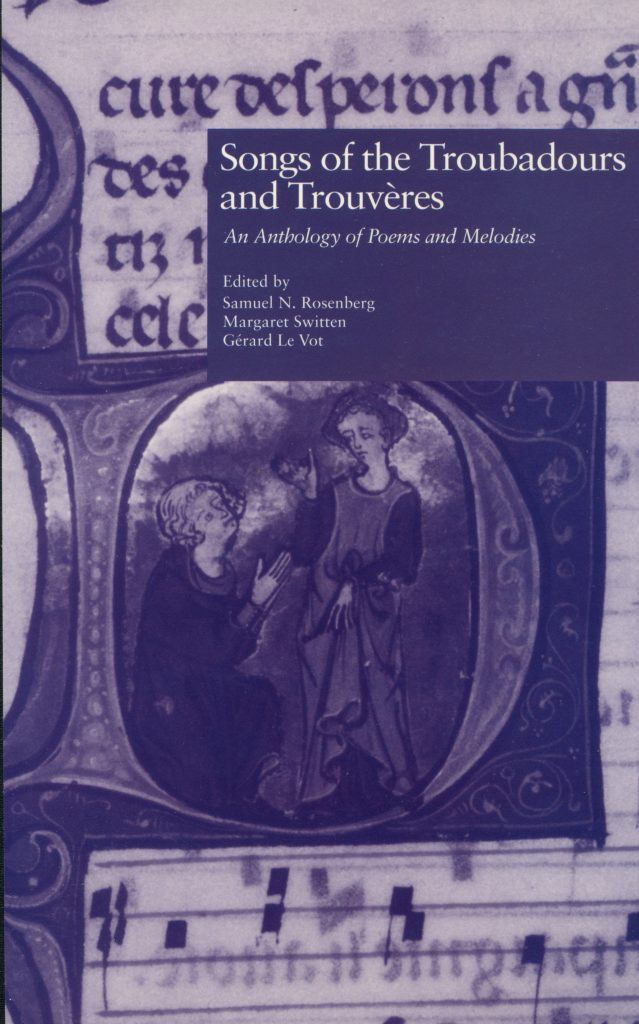
Songs of the Troubadours and Trouvères: An Anthology of Poems and Melodies
Two linked repertories constitute the vernacular lyric heritage of 12th-and 13th-century France: the work of the troubadours, who wrote their texts in langue d’oc, the language of the south (Old Provençal), and the trouvères, who worked in langue d’oïl, the language of the north (Old French). Their monophonic compositions range across various genres and thematic concerns, not at all limited to the songs of “courtly love,” for which they are particularly renowned. This anthology is representative of their melodic and textual art. ►
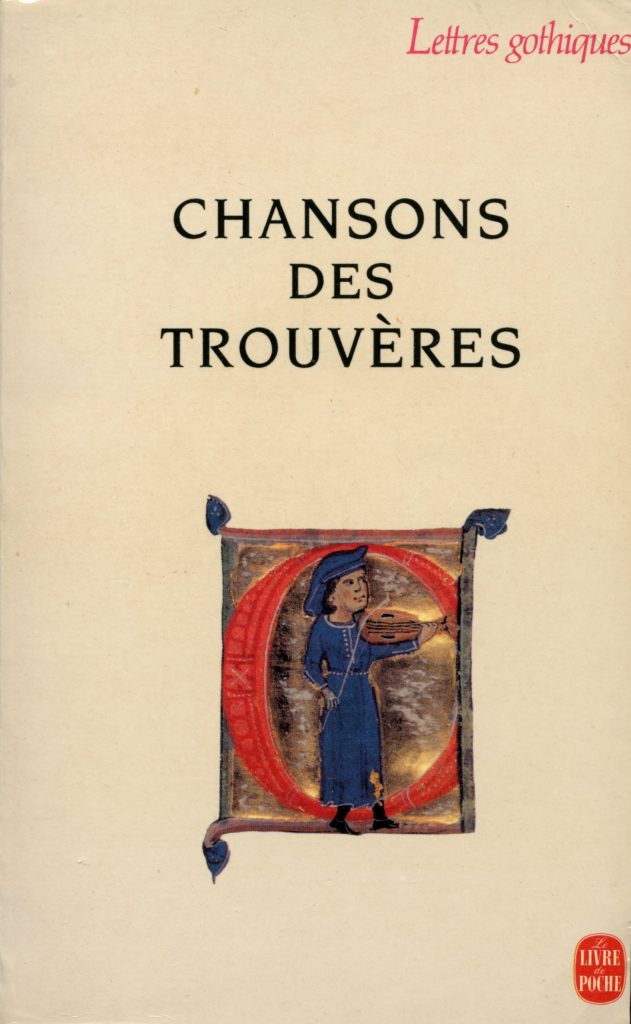
Chansons des trouvères: chanter m’estuet
This 1995 critical edition of 217 trouvère lyrics is an enlarged, updated version of Chanter m’estuet (1981), with translations into modern French by Marie-Geneviève Grossel. ►
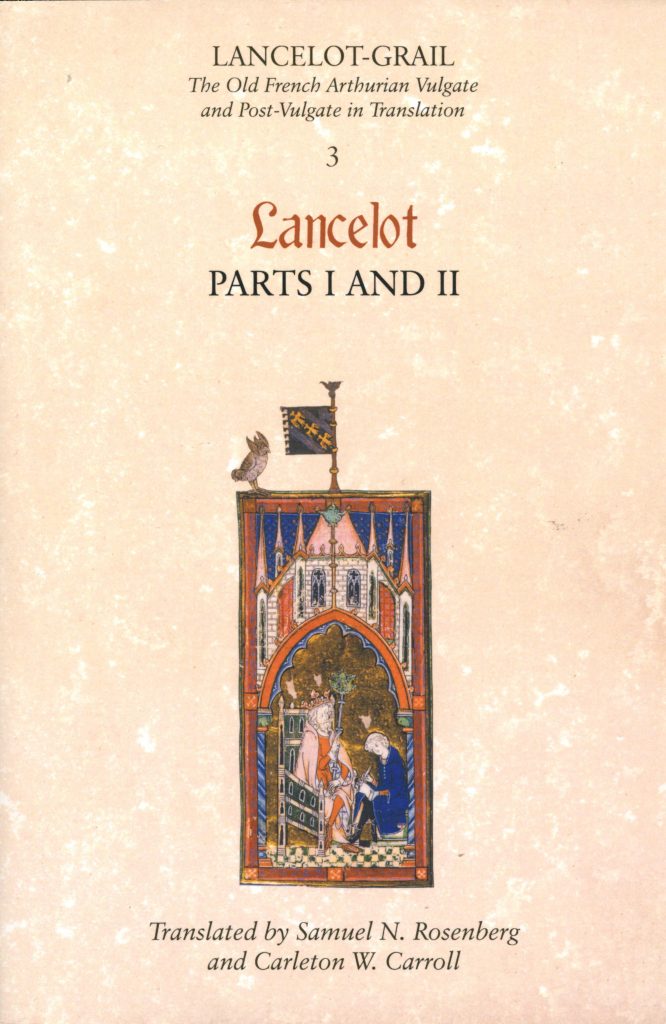
Lancelot-Grail: The Old French Arthurian Vulgate and Post-Vulgate in Translation—Lancelot, Part I
The Old French Lancelot-Grail (or Vulgate Cycle) is a massive 13th-century Arthurian narrative, which was soon supplemented with the Post-Vulgate. For nearly eight centuries, familiar works about King Arthur and his world have drawn—directly or indirectly—on this literary monument, translated in the 1990s by a team of Old French scholars. Lancelot (Part I) is the beginning of a long account of the famous knight of the Round Table. ►
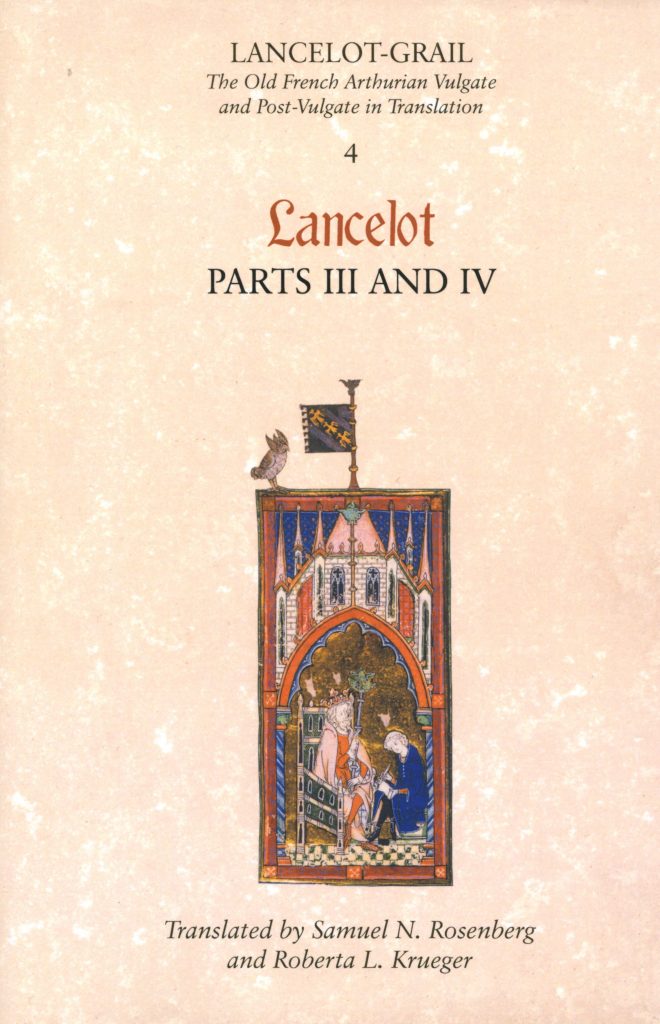
Lancelot-Grail: The Old French Arthurian Vulgate and Post-Vulgate in Translation—Lancelot, Part III
The Old French Lancelot-Grail (or Vulgate Cycle) is a massive 13th-century Arthurian narrative, which was soon supplemented with the Post-Vulgate. For nearly eight centuries, familiar works about King Arthur and his world have drawn—directly or indirectly—on this literary monument, translated in the 1990s by a team of Old French scholars. Lancelot (Part III) is the conclusion of a long account of the famous knight of the Round Table. ►
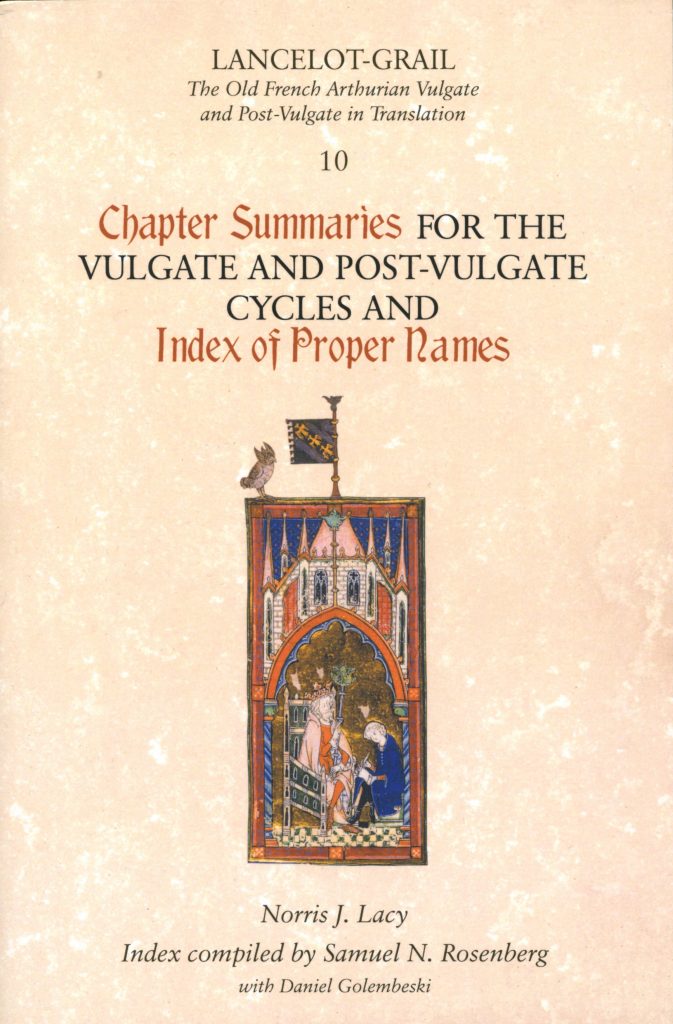
Lancelot-Grail: The Old French Arthurian Vulgate and Post-Vulgate in Translation — Index of Proper Names
The Old French Lancelot-Grail (or Vulgate Cycle) is a massive 13th-century Arthurian narrative, which was soon supplemented with the Post-Vulgate. For nearly eight centuries, familiar works about King Arthur and his world have drawn—directly or indirectly—on this literary monument, translated in the 1990s by a team of Old French scholars. This final volume includes chapter summaries of both cycles and an index of proper nouns. ►
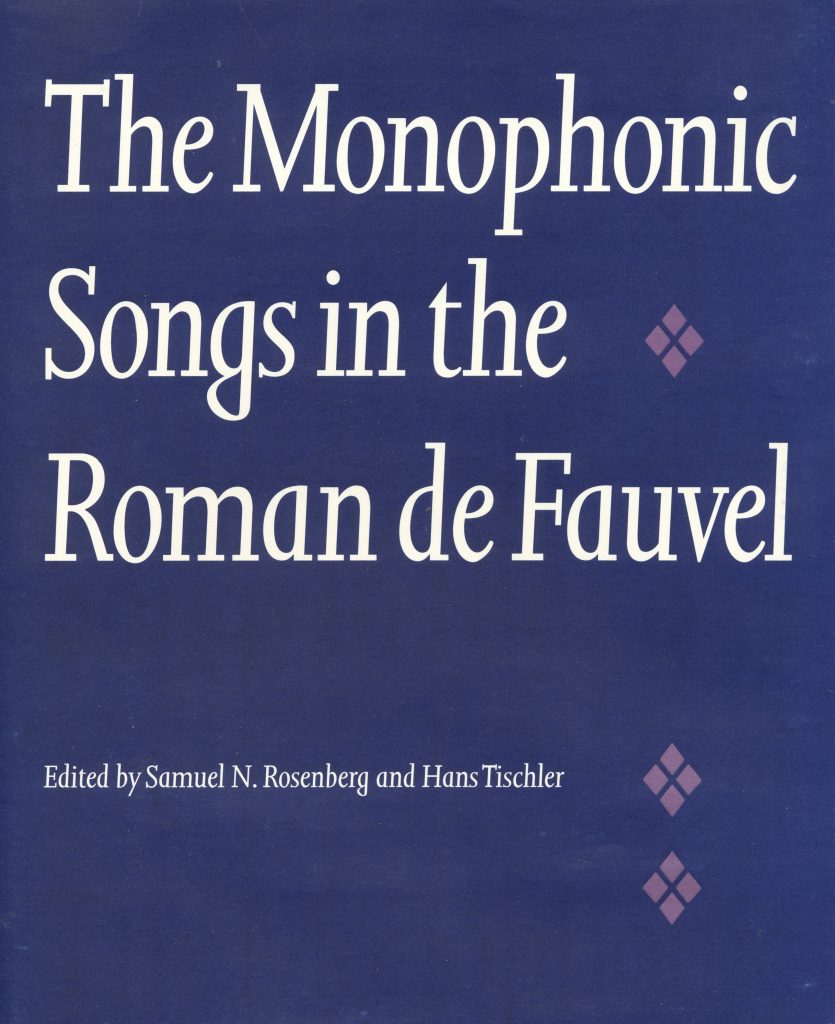
The Monophonic Songs in the Roman de Fauvel
The Livre, or Roman, de Fauvel began as a satirical poem by Gervais du Bus in the early 14th century. Its allegorizing narrative develops around the figure of the horse Fauvel, richly endowed with human vices. In a 1318 version, the story is greatly enriched with music—including compositions both monophonic and polyphonic, both French and Latin, and both secular and liturgical. ►

The Lyrics and Melodies of Gace Brulé
The number of compositions attributable to the late-12th-century trouvère called Gace Brulé is higher than for any other such French writer of the time. To judge by the unusually numerous manuscript redactions in which many have survived, and the privileged place that they are granted there, his songs were well known and widely appreciated. Our critical edition (with English translations) covers the entire corpus ascribable to Gace, which is devoted above all to the chanson and its expression of “courtly love.” ►
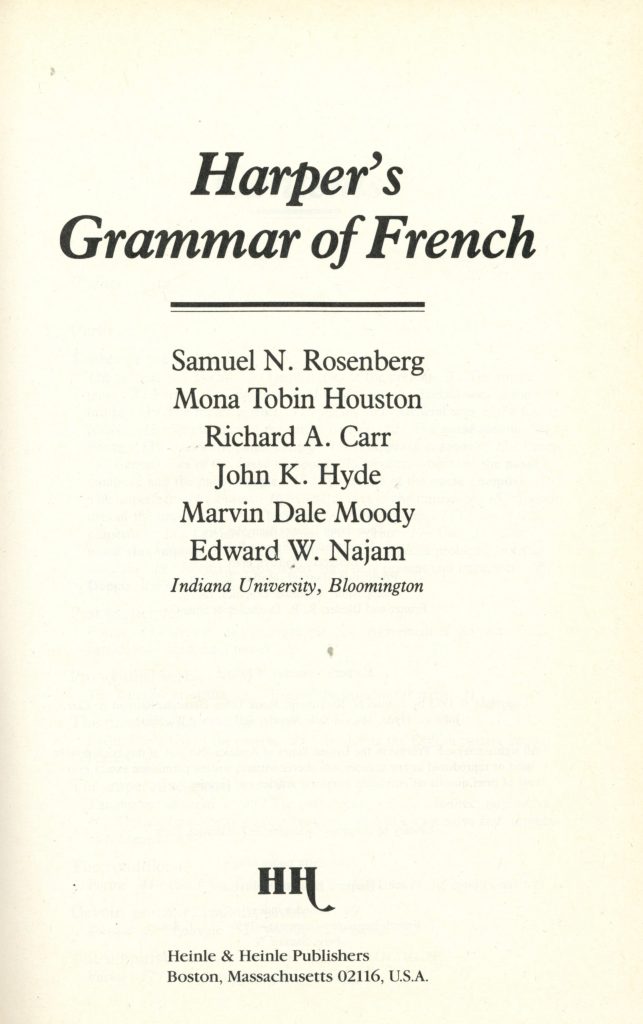
Harper’s Grammar of French
“This book arose out of a lack we perceived in teaching our third-year undergraduate course in advanced grammar and composition. We needed a work that would combine the detail of a comprehensive reference grammar with readings and exercises developing proficiency in the written language.” — From the Preface ►
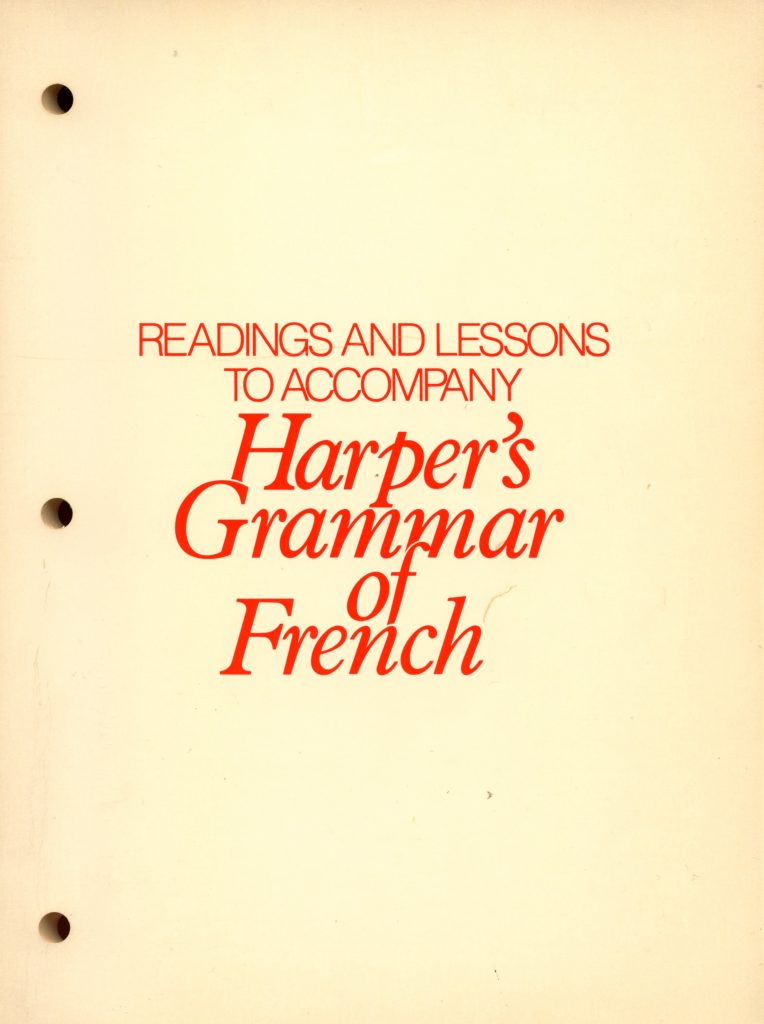
Readings and Lessons to Accompany Harper’s Grammar of French
A practical set of 20 lessons, with 10 readings to provide focused subject matter for the exercises. ►
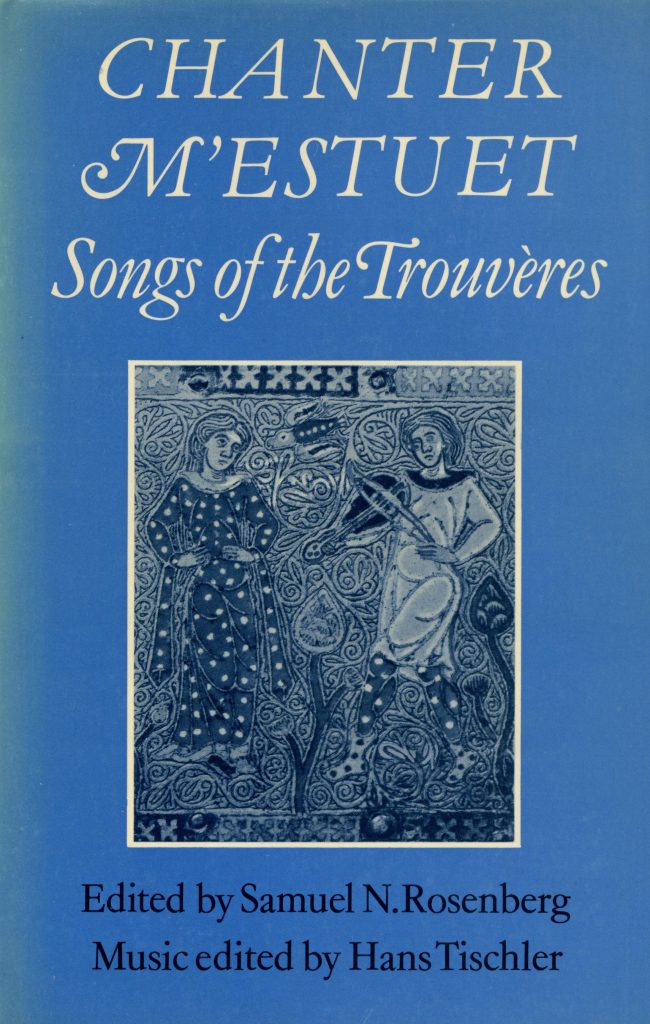
Chanter m’estuet: Songs of the Trouvères — A Critical Anthology of French Lyric Poetry of the 12th and 13th Centuries
This collection of 217 Old French lyrics “attempts to be representative of almost all types of Old French monophonic song from its beginning around 1150 to the end of the thirteenth century. It offers texts newly edited from the surviving manuscripts, established according to a consistent critical practice. And it includes music for all texts for which music has been preserved.” — From the Introduction. ►
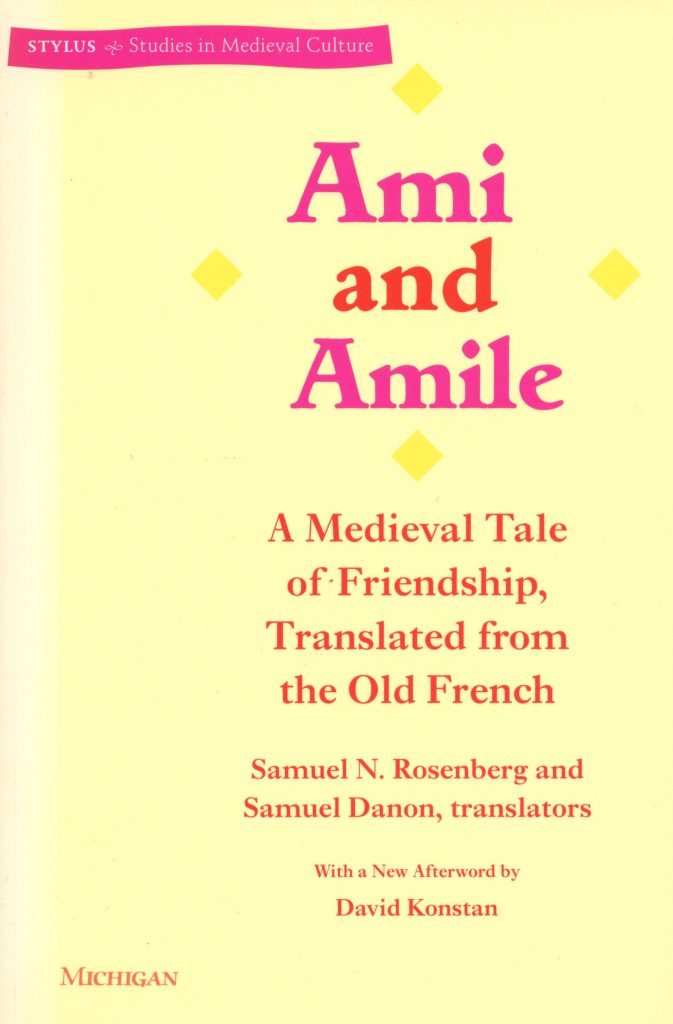
Ami and Amile: A Medieval Tale of Friendship
The story of Ami and Amile—two friends as identical as any twins—was rendered in many versions and in many languages in the Middle Ages. This Old French masterwork (from about the year 1200) tells of their knightly adventures and the trials, horrors, and miracles that come to pass. ►
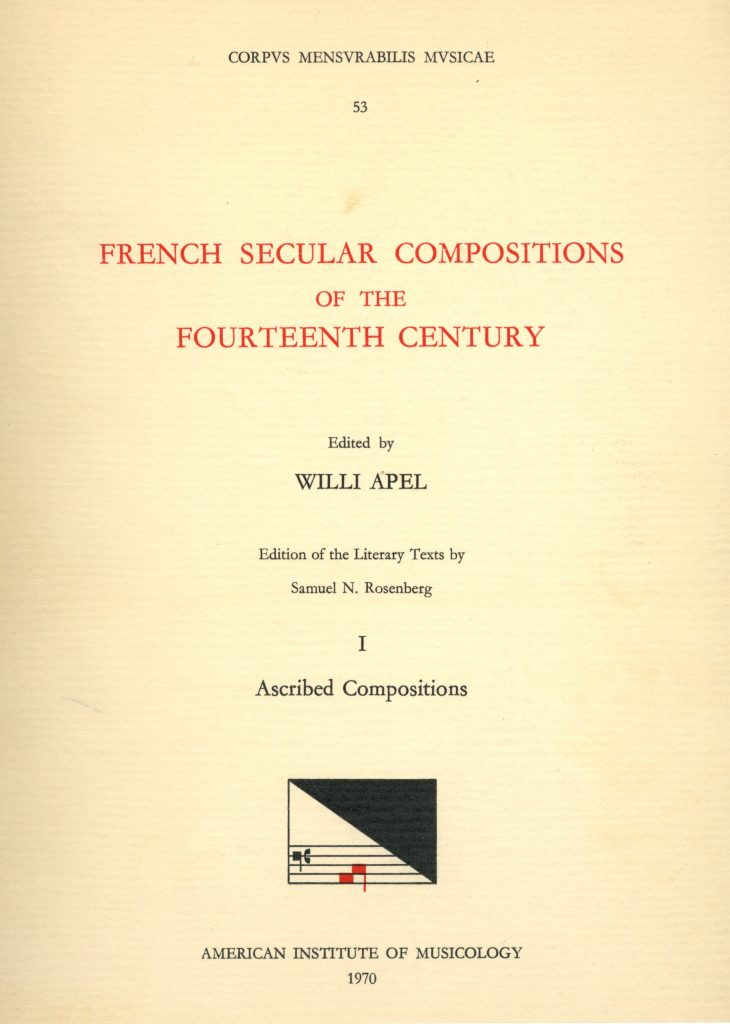
French Secular Compositions of the 14th Century: Vol. I, Ascribed Compositions
The three volumes of Willi Apel’s major work contain the entire repertory of 14th-century French secular polyphony, with only two exceptions: the works of Machaut and the compositions in the codex Torino. Vol. I presents 118 ascribed compositions. ►
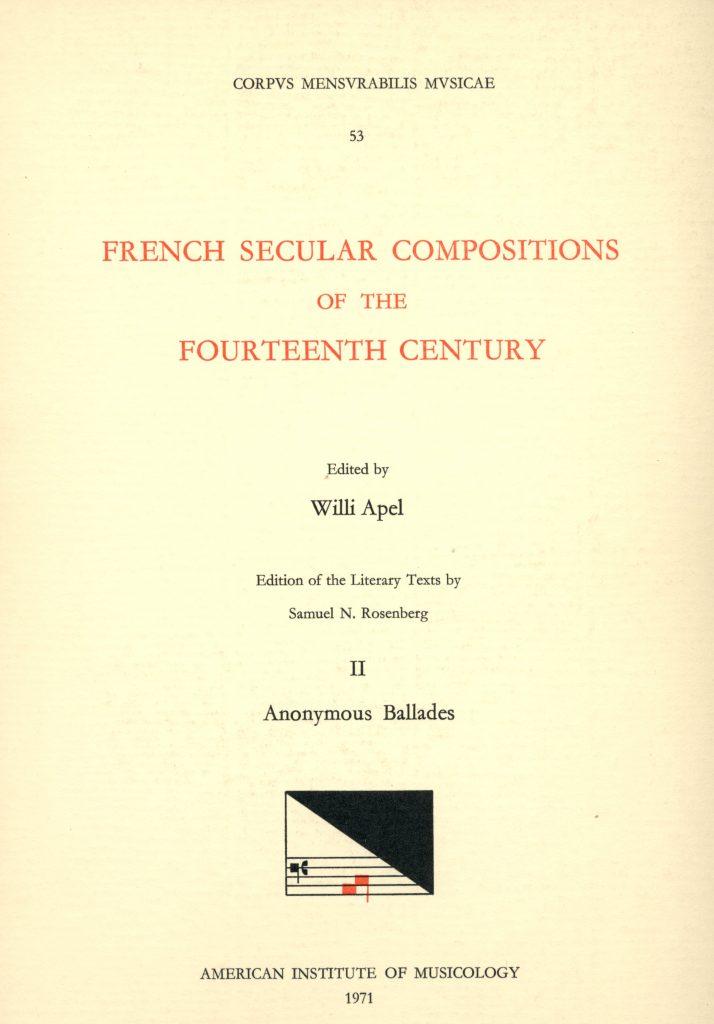
French Secular Compositions of the 14th Century: Vol. II, Anonymous Ballades
The three volumes of Willi Apel’s major work contain the entire repertory of 14th-century French secular polyphony, with only two exceptions: the works of Machaut and the compositions in the codex Torino. Vol. II contains 61 anonymous ballades. ►

French Secular Compositions of the 14th Century: Vol. III, Anonymous Virelais, Rondeaux, Chansons, Canons. Appendix: Compositions with Latin Texts
The three volumes of Willi Apel’s major work contain the entire repertory of 14th-century French secular polyphony, with only two exceptions: the works of Machaut and the compositions in the codex Torino. Volume III comprises 55 virelais, 40 rondeaux, 3 chansons, 6 canons, and 12 secular compositions with Latin texts—all anonymous. ►
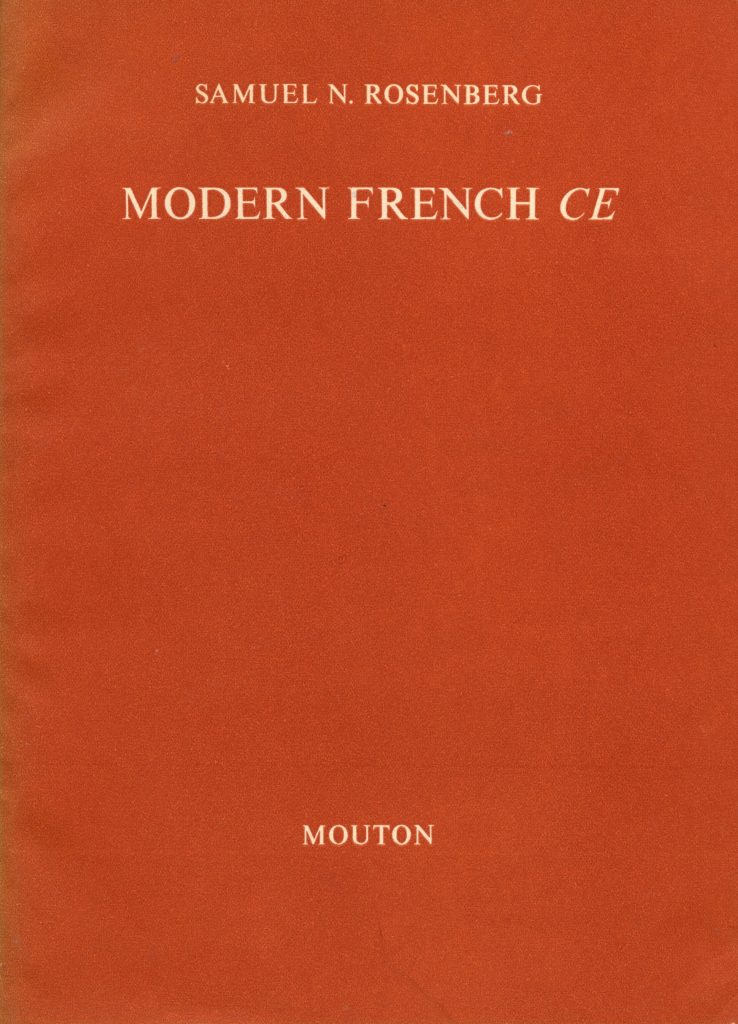
Modern French ‘Ce’: The Neuter Pronoun in Adjectival Predication
This is a study of the neuter pronoun ce as found in the construction C’EST + adjective, this construction, whenever possible, being compared with IL EST + adjective. Based on a corpus of 2600 examples drawn from 242 works of the first half of the twentieth century, it is the first monograph to offer a careful and meaningful distinction between ce and il in adjectival predication. ►

The Indo-European Dialects
This translation of Antoine Meillet’s classic study remains useful for understanding the development and early differentiation of Indo-European dialects and languages. ►
